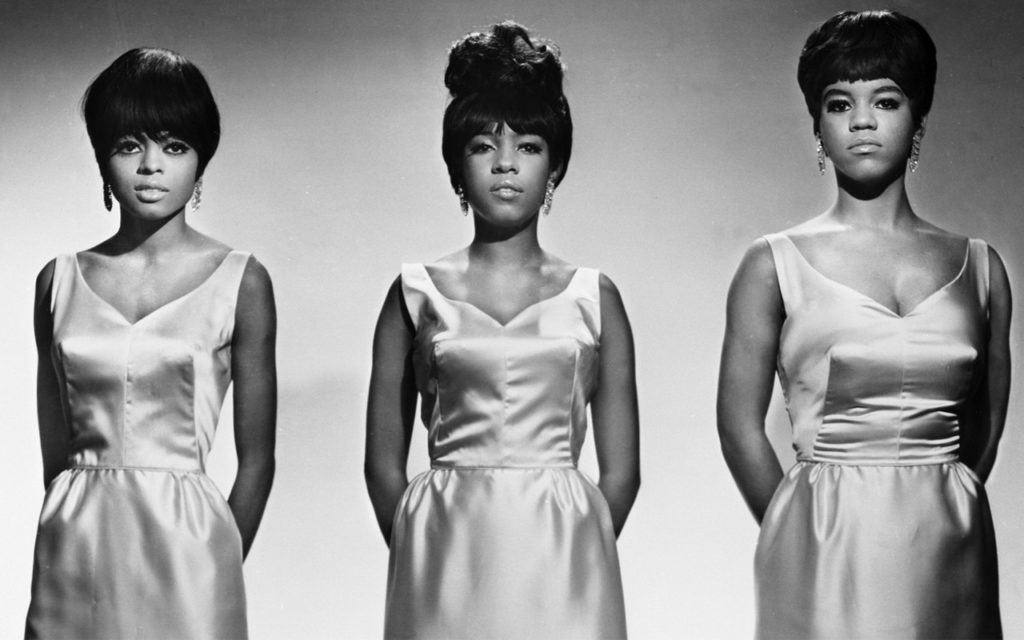Ambient music pioneer, glam rocker, producer, innovator - throughout his long, productive and hugely influential career, Brian Eno has stuck to all of these roles.
Eno defended the point of view that theory is more important than practice, intuitive insight rather than thoughtfulness of music. Using this principle, Eno has performed everything from punk to techno to new age.
At first he was only a keyboard player in the band Roxy Music, but decided to leave the band in 1973 and released atmospheric instrumental albums with King Crimson guitarist Robert Fripp.
He also pursued a solo career, recording art rock albums (Here Come the Warm Jets and Another Green World). Released in 1978, the groundbreaking album Ambient 1: Musicforairport gave its name to a genre of music with which Eno is very closely associated, although he continued to release songs with vocals from time to time.
He also became a very successful producer for rock and pop artists and bands such as U2, Coldplay, David Bowie and the Talking Heads.
Brian Eno's first passion for music
Brian Peter George St. John le Baptiste de la Salle Ino (full name of the artist) was born on May 15, 1948 in Woodbridge (England). He grew up in rural Suffolk, in the area adjacent to the US Air Force base, and was fond of "Martian music" as a child.
This style belongs to one of the offshoots of the blues - doo-wop. Eno also listened to rock and roll on US military radio.
At art school, he became familiar with the works of contemporary composers John Tilbury and Cornelius Cardew, as well as minimalists John Cage, La Monte Young and Terry Riley.
Guided by the principles of conceptual painting and sound sculpture, Eno began experimenting with tape recorders, which he called his first musical instrument, and drew inspiration from Steve Reich's orchestration of It's Gonna Rain ("It's gonna rain").
Joining Merchant Taylor's avant-garde troupe, he also ended up as a vocalist in the rock band Maxwell Demon. In addition, since 1969, Eno has been a clarinetist at the Portsmouth Sinfonia.
In 1971, he rose to prominence as a member of the original glam band Roxy Music, playing synthesizer and processing the band's music.
Eno's mysterious and flamboyant image, his bright make-up and clothes began to threaten the primacy of the band's frontman Bryan Ferry. Relations between the musicians became tense.
After releasing two LPs (the self-titled debut album (1972) and the successful For Your Pleasure (1973)) Eno left Roxy Music. The guy decided to do side projects, as well as a solo career.
First recordings without the band Roxy Music
Eno's first album No Pussyfooting was released in 1973 with the participation of Robert Fripp. To record the album, Eno used a technique that was later called Frippertronics.
Its essence was that Eno processed the guitar using looped delays and pauses. Thus, he pushed the guitar into the background, giving free rein to the samples. In simple words, Eno replaced live instruments with electronic sounds.
Brian soon began recording his first solo album. It was an experiment. Here Come the Warm Jets reached the UK Top 30 Albums.
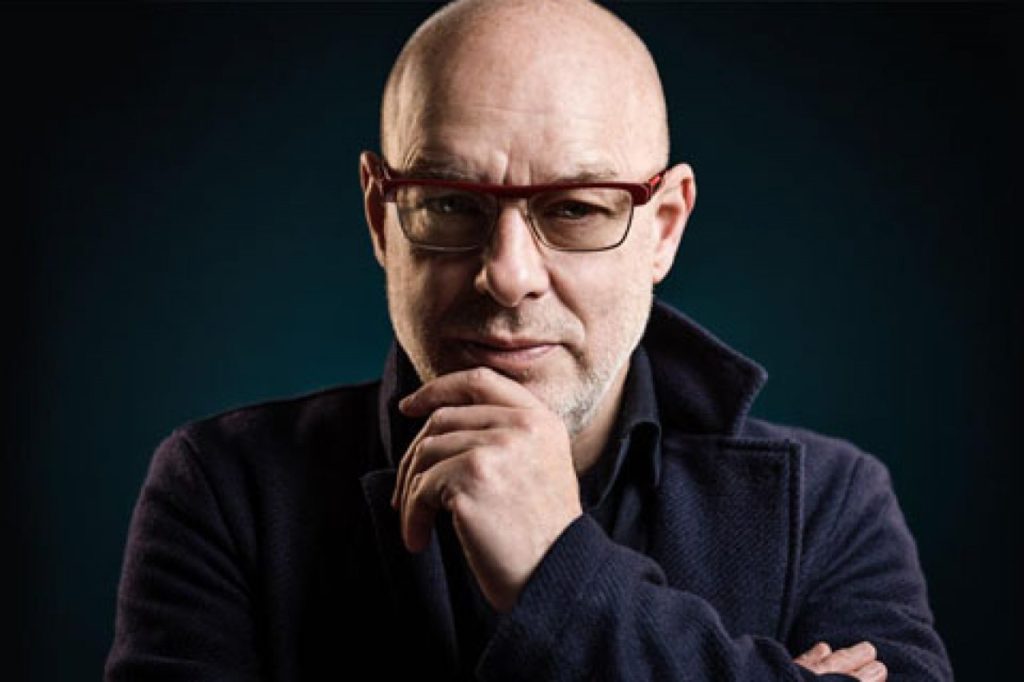
A brief stint with the Winkies enabled Eno to perform in a series of UK shows despite his health problems. Less than a week later, Ino was hospitalized for pneumothorax (a serious lung problem).
After recovering, he went to San Francisco and happened to see a set of postcards containing a Chinese opera. It was this event that inspired Eno to write Taking Tiger Mountain (By Strategy) in 1974. As before, the album was full of abstract pop music.
Composer Brian Eno's innovation
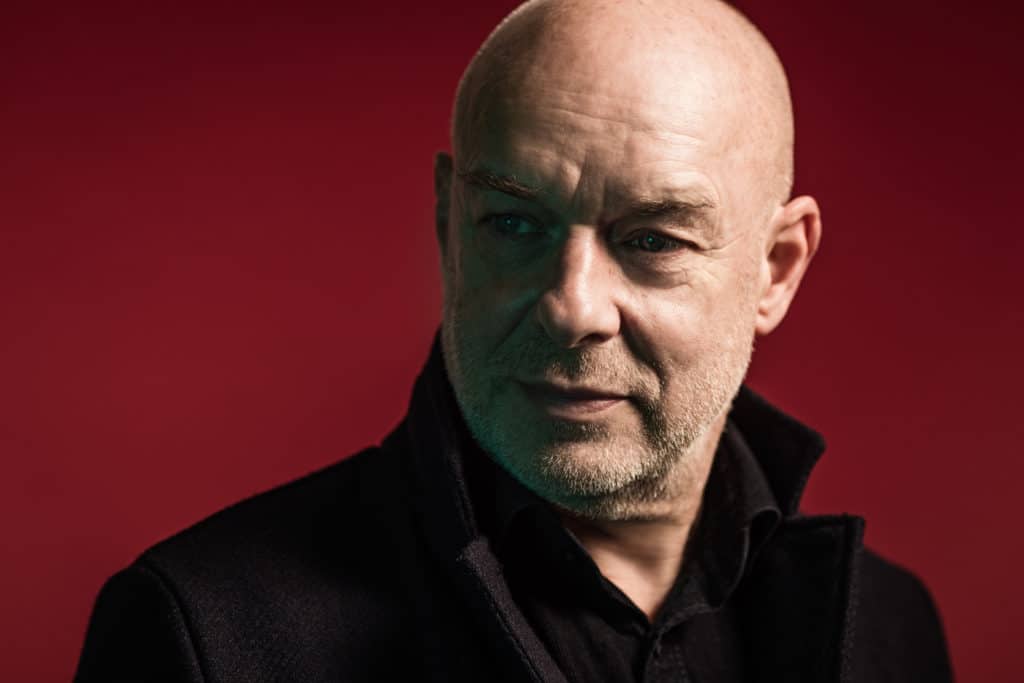
A car accident in 1975 that left Eno bedridden for several months led to perhaps his most significant innovation, the creation of ambient music.
Unable to get out of bed and turn on the stereo to drown out the sound of the rain, Eno theorized that music could have the same properties as light or color.
It sounds very incomprehensible and abstract, but this is the whole Brian Eno. His new music was supposed to create its own atmosphere, and not convey the idea to the listener.
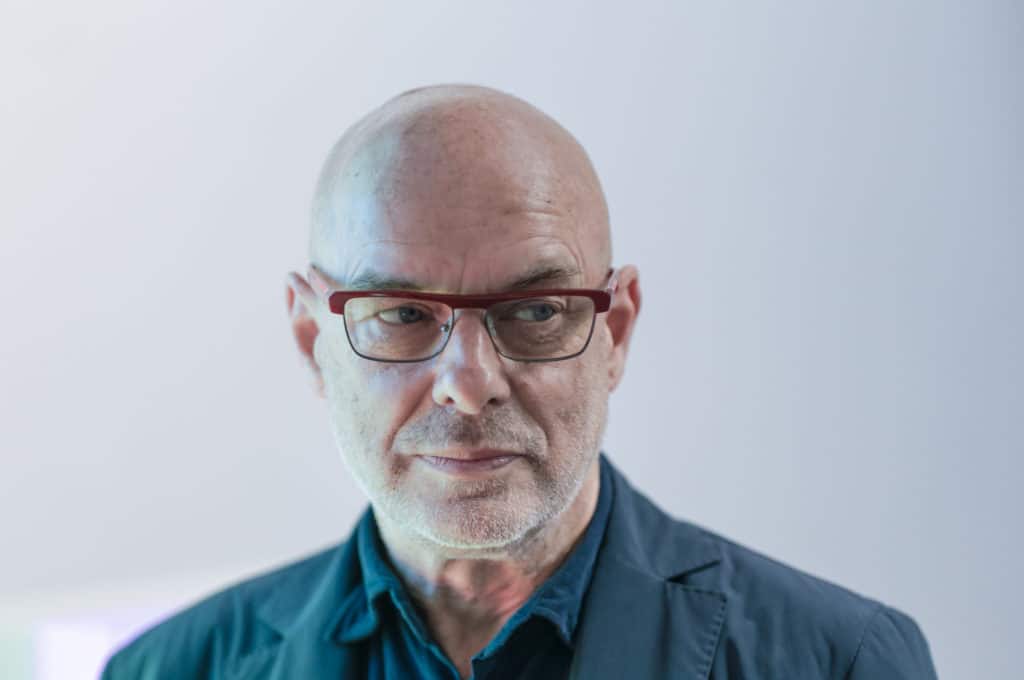
In 1975, Eno had already plunged headlong into the world of ambient music. He released his groundbreaking album Discreet Music, the first chapter in a series of 10 experimental albums. Eno has recorded his work on his own label, Obscure.
Continuation of career
Eno returned to pop music in 1977 with Before and After Science, but continued to experiment with ambient music. He recorded music for films. These were not real films, he imagined plots and wrote soundtracks for them.
At the same time, Eno became a very sought-after producer. He collaborated with the German band Cluster and also with David Bowie. With the latter Eno worked on the famous trilogy Low, Heroes and Lodger.
In addition, Eno created an original no-wave compilation entitled No New York, and in 1978 he began a long and fruitful alliance with the rock band the Talking Heads.
His prominence in the group increased with the release of More Songs About Buildings and Food and Fear of Music in 1979. The band's frontman David Byrne even credited Brian Eno with nearly all of the tracks.
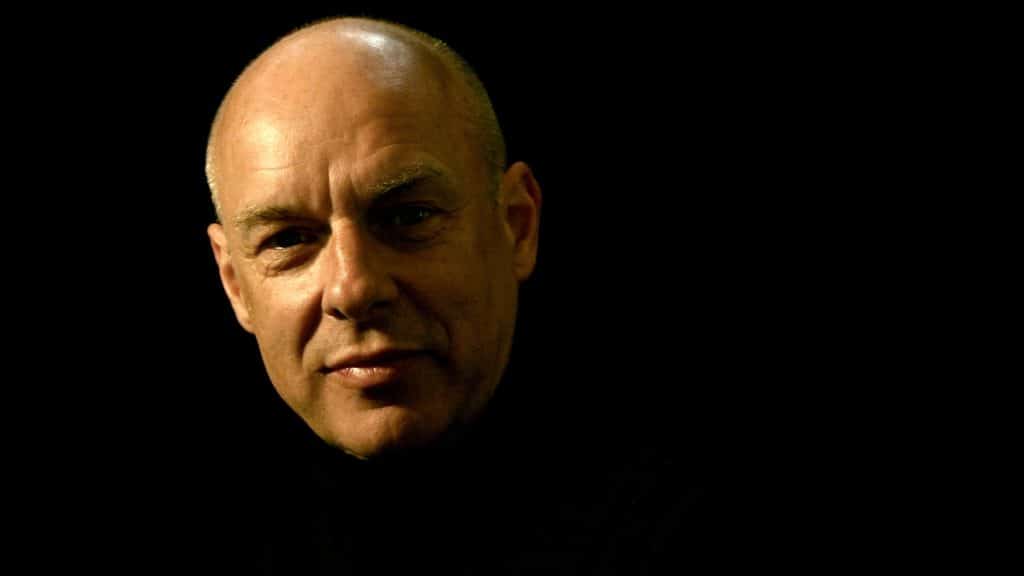
However, strained relations with other members of the team hastened the departure of Brian from the group. But in 1981 they got back together to record My Life in the Bush of Ghosts.
This work became famous thanks to the combination of electronic music and unusual percussion playing. Meanwhile, Eno continued to refine his genre.
In 1978 he released Music for Airports. The album was intended to reassure air passengers and relieve them of their fear of flying.
Producer and musician
In 1980, Eno began collaborating with composer Harold Budd (The Plateaux of Mirror) and avant-garde trumpeter John Hassell.
He also worked with producer Daniel Lanois, with whom Eno created one of the most commercially successful groups of the 1980s - U2. Eno spearheaded a series of recordings by this band, which made U2 very respected and popular musicians.
During this hectic period, Eno continued to devote himself to his solo work, recording the song On Land in 1982, and in 1983 the space-themed album Apollo: Atmospheres & Soundtracks.
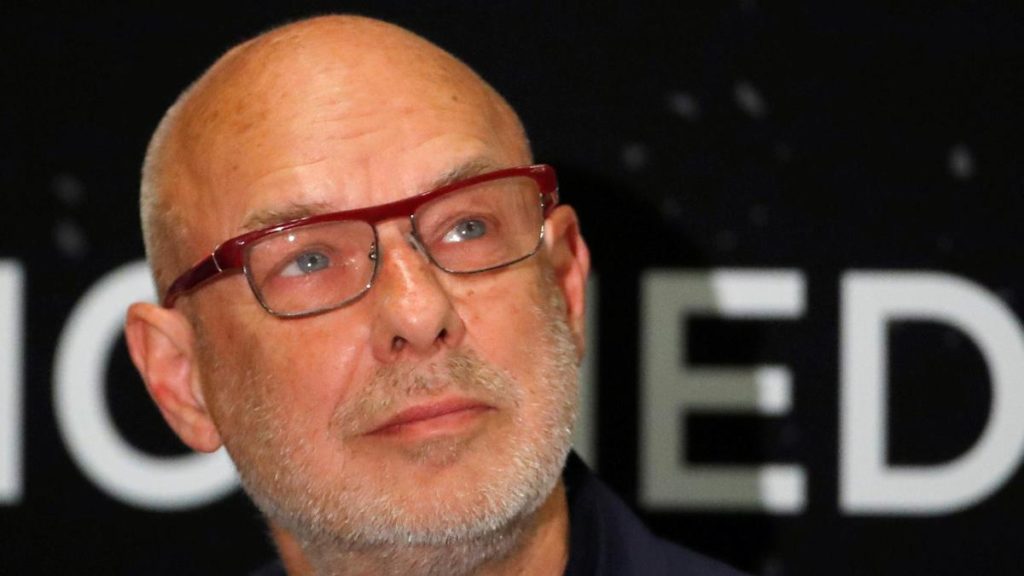
After Eno produced John Cale's solo album Words for the Dying in 1989, he began work on Wrong Way Up (1990). It was the first record in many years where Brian's vocals could be heard.
Two years later he returned with solo projects The Shutov Assembly and Nerve Net. Then in 1993 came Neroli, the soundtrack to Derek Jarman's posthumously released film. In 1995, the album was remastered and released under the name Spinner.
Ino is not only a musician
In addition to his musical work, Eno has also frequently worked in other areas of media, beginning with the 1980 vertical format video Mistaken Memories of Medieval Manhattan.
Along with the 1989 art installation for the opening of a Shinto shrine in Japan and the multimedia work Self-Preservation (1995) by Laurie Anderson, he also published the diary A Year with Swollen Appendices (1996).
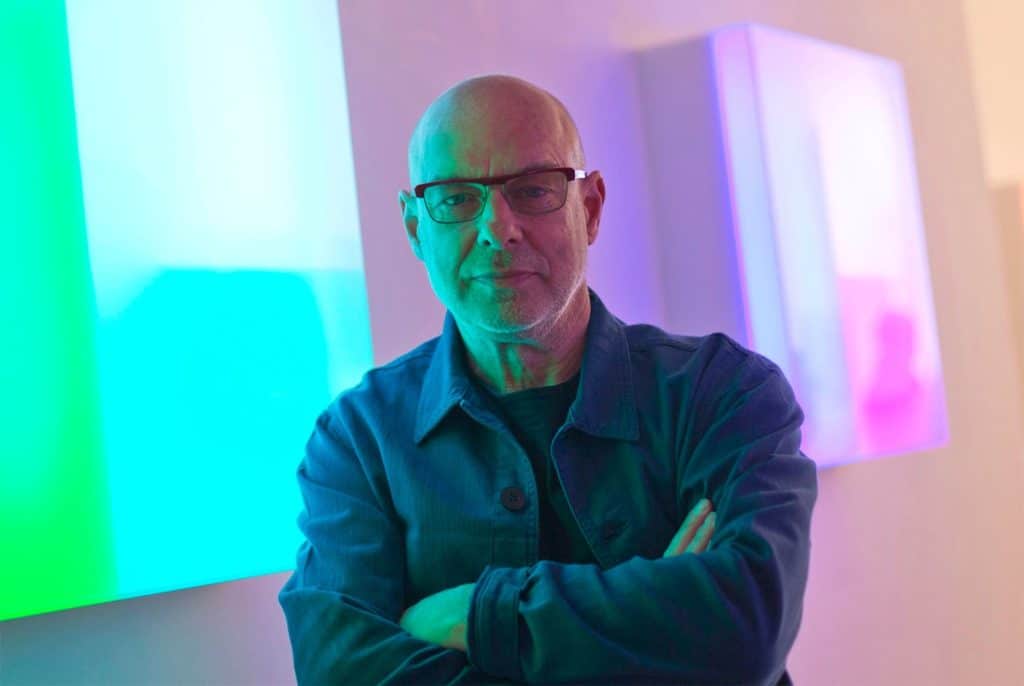
In the future, he also created Generative Music I - audio intros for a home computer.
In August 1999, Sonora Portraits was released, featuring Eno's previous compositions and an accompanying 93-page booklet.
Around 1998 Eno worked extensively in the world of art installations, a series of his installation soundtracks began to appear, most of which were released in limited quantities.
2000-ies
In 2000, he teamed up with German DJ Jan Peter Schwalm for the Japanese music release Music for Onmyo-Ji. The duo gained worldwide recognition the following year with Drawn from Life, which marked the beginning of Eno's relationship with the Astralwerks label.
The Equatorial Stars, released in 2004, was Eno's first collaboration with Robert Fripp since Evening Star.
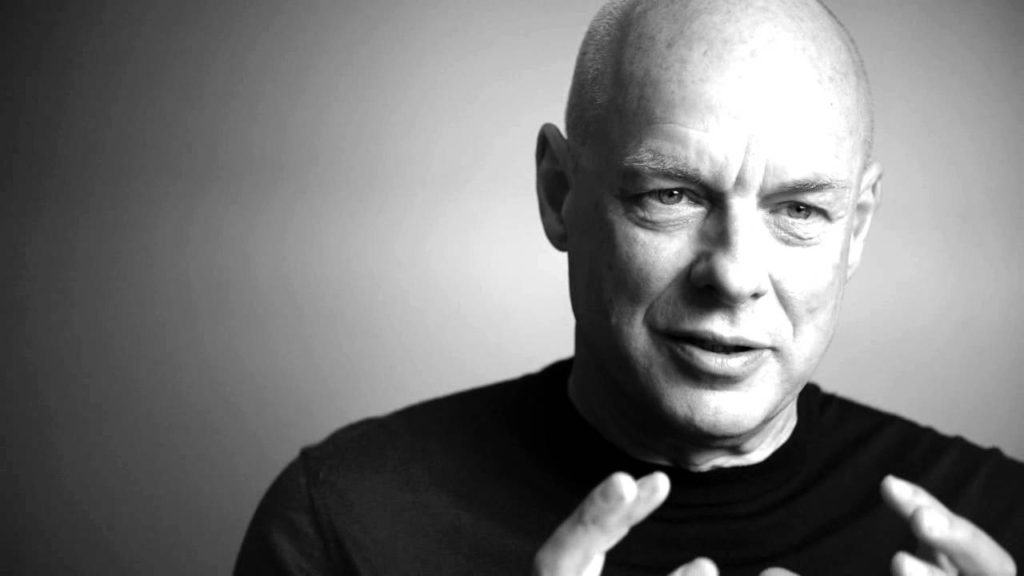
His first solo vocal album in 15 years, Another Day on Earth, was released in 2005, followed by Everything That Happens Will Happen Today, a collaboration with David Byrne.
In 2010, Eno signed to the Warp label, where he released the album Small Crafton a Milk Sea.
Eno returned to his recording style with Lux in late 2012. His next project was a collaboration with Underworld's Karl Hyde. The finished album Someday World was released in May 2014.
Eno returned to solo work in 2016 with The Ship, which consisted of two long tracks with a total length of 47 minutes.
Eno collaborated with pianist Tom Rogerson throughout 2017, resulting in the album Finding Shore.
Ahead of the 50th anniversary of the moon landing, Eno released a remastered edition of Apollo: Atmospheres & Soundtracks in 2019 that includes additional tracks.


